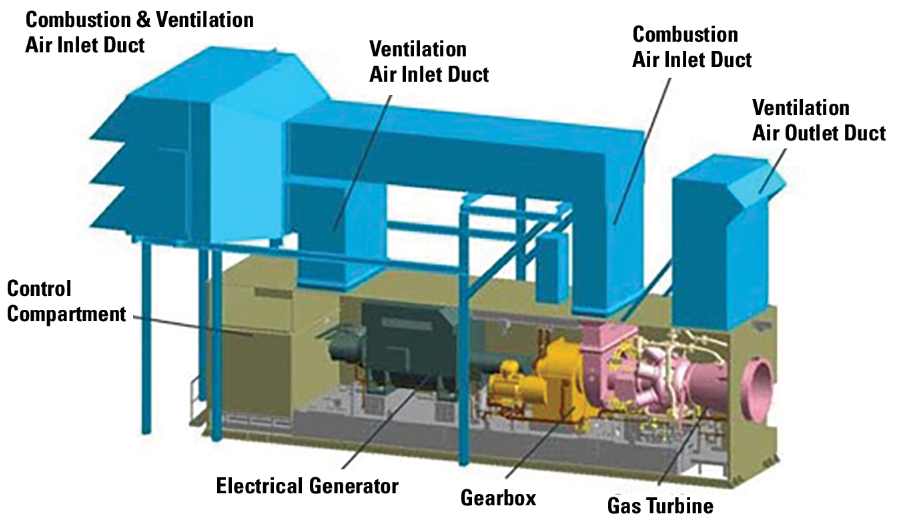Onsite Power Generation
Satisfied with your electric company, or the size of your electric bills? Feel like you don’t have any alternative to dealing with your local utility company because it’s your only way to connect to the electric grid? For many, it’s considered a necessary evil. After all, your business is producing metal castings, not making electricity.
You need to pay the electric bill because it’s the lifeblood of your business. There is no alternative.
Or is there…?
Today, packaged, reliable and fully tested electric generation solutions can be delivered to your site and integrated with your existing electricity connections. They can be used for emergency backup generation and/or used to reduce how much electricity you need from the electric utility company on a regular basis.
Onsite generation products are now available for any size metalcasting facility.
Onsite electric generation for all or part of your needs has been a reality for years. This reliable technology can allow you to go off grid for all your electric needs.
You can “cut the cord,” or you can stay connected but draw less electricity from the grid by generating some of your needs. Either way, the return on such an investment is often very good, and your monthly electric bill is a lot lower.

Small- and Medium-Load Requirements
For generation requirements less than 6 Megawatts, you might find using natural gas-fueled reciprocating engines to be the best choice.
Some vendors make this a very easy decision. They pay for the total cost of the generation equipment, installation, fuel and maintenance costs. The vendor pays for all costs of installing and operating the generator(s).
Such programs require no capital costs from you. The vendor makes money by delivering electricity for less than your local utility. You pay a fixed rate per kWh for the power generated by the vendor for a given contract period. The vendor profit comes from the difference of what they charge you and their cost to generate.
Your electric rate per kWh is guaranteed to be less than what you are currently paying your electric utility company. There are no other costs.
Larger Load Requirements
For generation requirements greater than 6 Megawatts, you might find using gas turbine engines are more economical. The return-on-investment (ROI) can be very impressive.
This is jet engine technology adapted for use in electric generation. Many utilities use very large versions of this to help power the grid; it is well-established technology. More compact versions have been designed for commercial and industrial facilities (Fig. 1).
One recent example is a large foundry that wanted to go totally off grid. Because of its load requirements, gas turbine generation technology was recommended. After an evaluation of the foundry’s needs, several potential solutions were identified.
Since onsite generator packages vary in electric output size, multiple units were recommended to meet the foundry’s needs. This provided redundancy, resilience, and operational control. The estimate included the cost of fuel, backup generation capacity, and regularly scheduled maintenance by the vendor. The estimated ROI was excellent, followed with a very large savings every year after that.
So, where do the savings come from?
On your latest electric bill, locate a line item called Demand (or Capacity) Charge. It shows your peak electric demand, usually in kilowatts (kW). This charge is to pay your utility company for reserving enough electric generation to be able to instantly respond to your maximum power requirement. The demand charge on your bill is probably at least half the total cost of the bill. For many foundries, it’s even more.
When you generate your own electricity, you reduce or eliminate your demand charges. A large demand charge is a big reason for the excellent ROI and ongoing savings. Lowering, or eliminating this, allows you to save a lot of money. A variety of other savings may also apply.
You will need a local fuel supply. Natural gas is one of the best fuels, being both inexpensive and abundant, but other fuel types can be used. Some systems have dual-fuel options, in case you have fuel delivery problems.
Systems that qualify as combined heat and power (CHP), can qualify for a Federal Business Energy Investment Tax Credit (10% of the total installation, up to 50 megawatts in size). Other state and federal tax benefits may also apply.
Much of the grid uses an aging infrastructure that is vulnerable to threats such as weather, cyber-attack, equipment failure, etc. Generating your own electricity can be a major part of your risk management strategy.
Avoided electric costs go directly to increased profitability every month.
Click here to see this story as it appears in the February 2020 issue of Modern Casting.